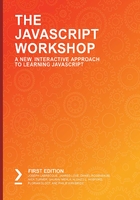
Introduction
In the previous chapter, we explored a historical overview of JavaScript and examined the language's relationship with the Standard ECMAScript. We then explored JavaScript by accessing the developer tools of various browsers to provide a basic introduction to how JavaScript can be accessed.
Now that we are familiar with JavaScript in a more cerebral way, it's time for some hands-on work with the language. First, we'll provide an overview of some popular tools for writing JavaScript and of the various runtimes available for executing code. With those installed, we can begin writing some JavaScript in order to gain some familiarity with the language's syntax and structure—how to write code in a meaningful way and how to include it in a web environment.
Within this chapter, we will pay particular attention to the primary target for most JavaScript environments and a great tool in itself—the modern web browser. In the previous chapter, we looked at an overview of how to access developer tools in various web browsers. In this chapter, we will further explore how these tools can be used in JavaScript development.
Finally, we'll dig more deeply into web browser interactions and look at how we can control both the style and content of elements within the web browser with the use of common JavaScript functions. All the code in this chapter will be written using the editor that we are about to introduce.